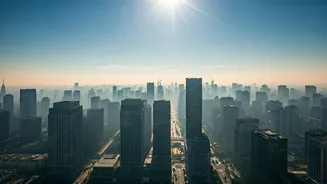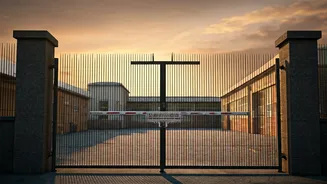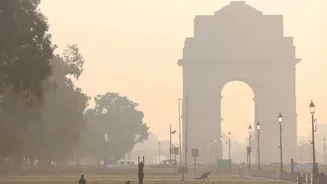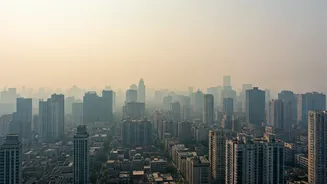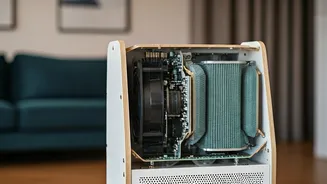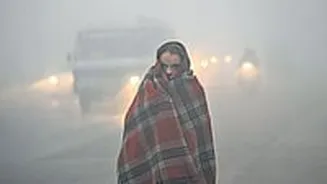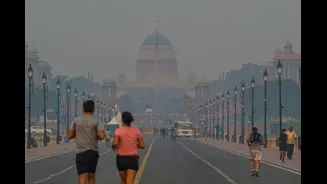Smog's Grim Reality
The air quality in Delhi has deteriorated significantly, with the Air Quality Index (AQI) nearing the 'Very Poor' category due to a dense smog. This hazardous
condition is primarily a result of a combination of factors, including vehicular emissions, industrial pollutants, and stubble burning in neighboring states. Meteorological conditions, especially falling temperatures, have further intensified the smog's impact. The cold air traps pollutants close to the ground, preventing their dispersion and leading to a buildup of harmful particles in the atmosphere. The residents of Delhi are thus facing a challenging scenario with the dip in temperature and the presence of dangerous levels of air pollution. The situation necessitates prompt action and effective measures to mitigate the environmental hazards.
Temperature's Negative Role
The plummeting temperatures in Delhi play a crucial role in worsening the city's air quality. As temperatures drop to single digits, the cold air becomes denser and heavier. This cold air settles near the ground, creating a thermal inversion. Thermal inversions prevent the upward movement of pollutants, which would typically disperse into the atmosphere. This causes a concentration of pollutants like particulate matter (PM2.5 and PM10), nitrogen oxides, and other harmful substances close to the ground. This concentration leads to a significant increase in the AQI, increasing the threat to public health. Moreover, these conditions exacerbate respiratory problems, and contribute to other health concerns, thereby underscoring the necessity of stringent monitoring and pollution control measures during the winter months.
Pollution's Multiple Sources
The thick smog that has engulfed Delhi can be attributed to several pollution sources. Vehicular emissions from the city's vast number of vehicles contribute a significant share of pollutants. Diesel-powered vehicles, in particular, release high levels of particulate matter and other harmful substances. Industrial emissions from factories and other facilities within and around Delhi also play a significant role. These industries often release various pollutants, including sulfur dioxide and nitrogen oxides, which contribute to smog formation. In addition, stubble burning in the agricultural areas of neighboring states is a major seasonal contributor to air pollution. The burning of crop residue releases massive amounts of smoke and other pollutants that are carried by the wind into Delhi, further deteriorating the air quality. All these factors combined significantly increase the levels of air pollutants.
Health Risks Looming
The 'Very Poor' air quality poses major health risks to Delhi's residents. Exposure to high concentrations of particulate matter and other pollutants can trigger or worsen respiratory problems like asthma, bronchitis, and chronic obstructive pulmonary disease (COPD). Children, the elderly, and individuals with existing health conditions are the most vulnerable. Moreover, prolonged exposure to polluted air can increase the risk of cardiovascular diseases, including heart attacks and strokes. The pollutants can enter the bloodstream and cause systemic inflammation, damaging various organs. The long-term health effects of chronic exposure to air pollution include an increased risk of lung cancer and other serious illnesses. The authorities are advising people to take precautions, such as wearing masks and staying indoors to limit exposure.
Mitigation and Prevention
Addressing Delhi's smog crisis requires a multi-pronged approach involving various measures. Implementing stricter emission standards for vehicles is crucial. Promoting the use of electric vehicles and cleaner fuels can reduce emissions. Controlling industrial emissions through stringent regulations and enforcement is also essential. Encouraging farmers in neighboring states to adopt alternatives to stubble burning, such as using bio-digesters or other methods, is necessary. Improved public transportation systems can help reduce the number of private vehicles on the road. Raising public awareness about the health risks associated with air pollution and promoting individual actions, like using public transport or carpooling, are important. The collaborative efforts of the government, industries, and individuals are essential for creating cleaner air.
